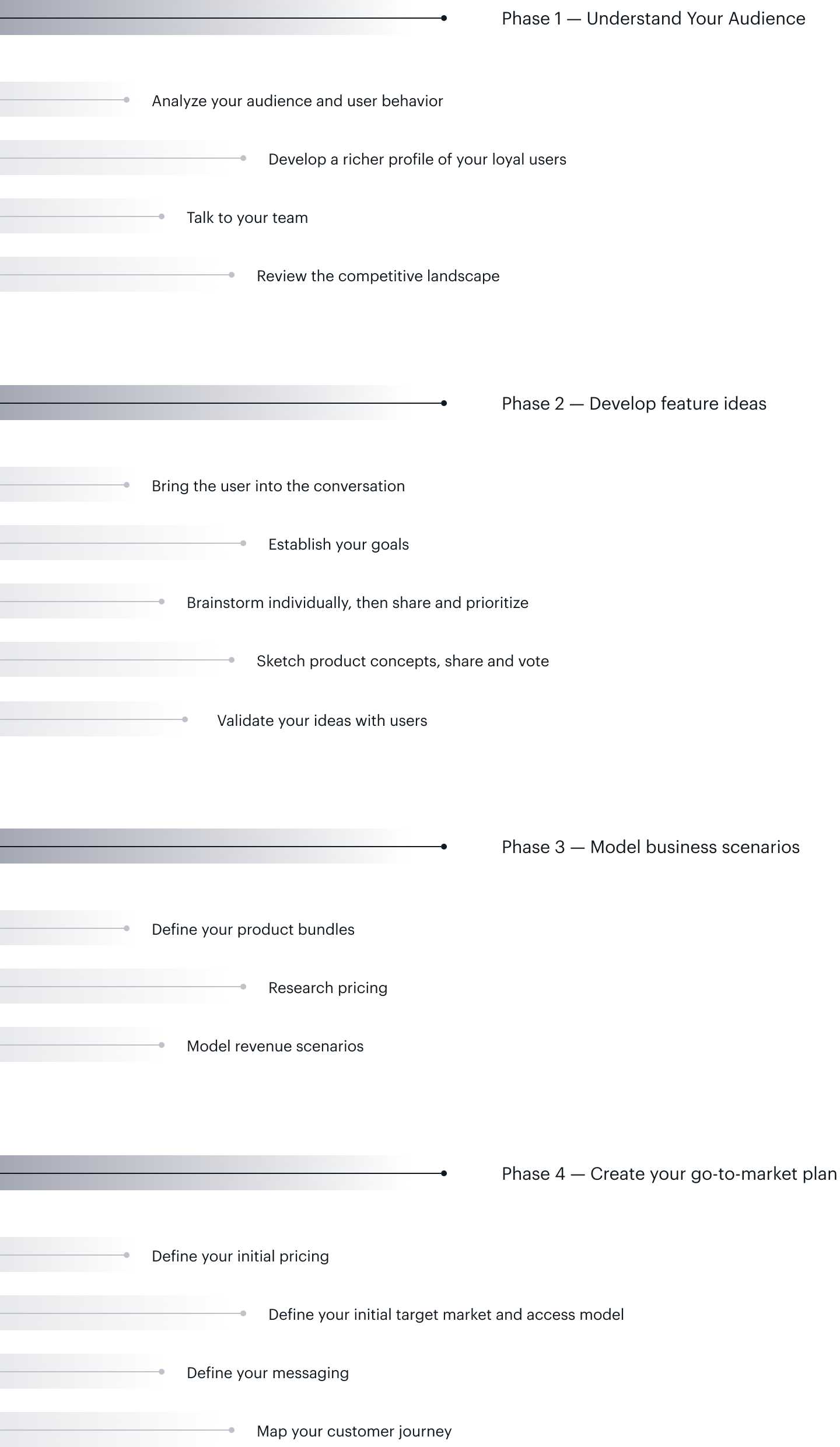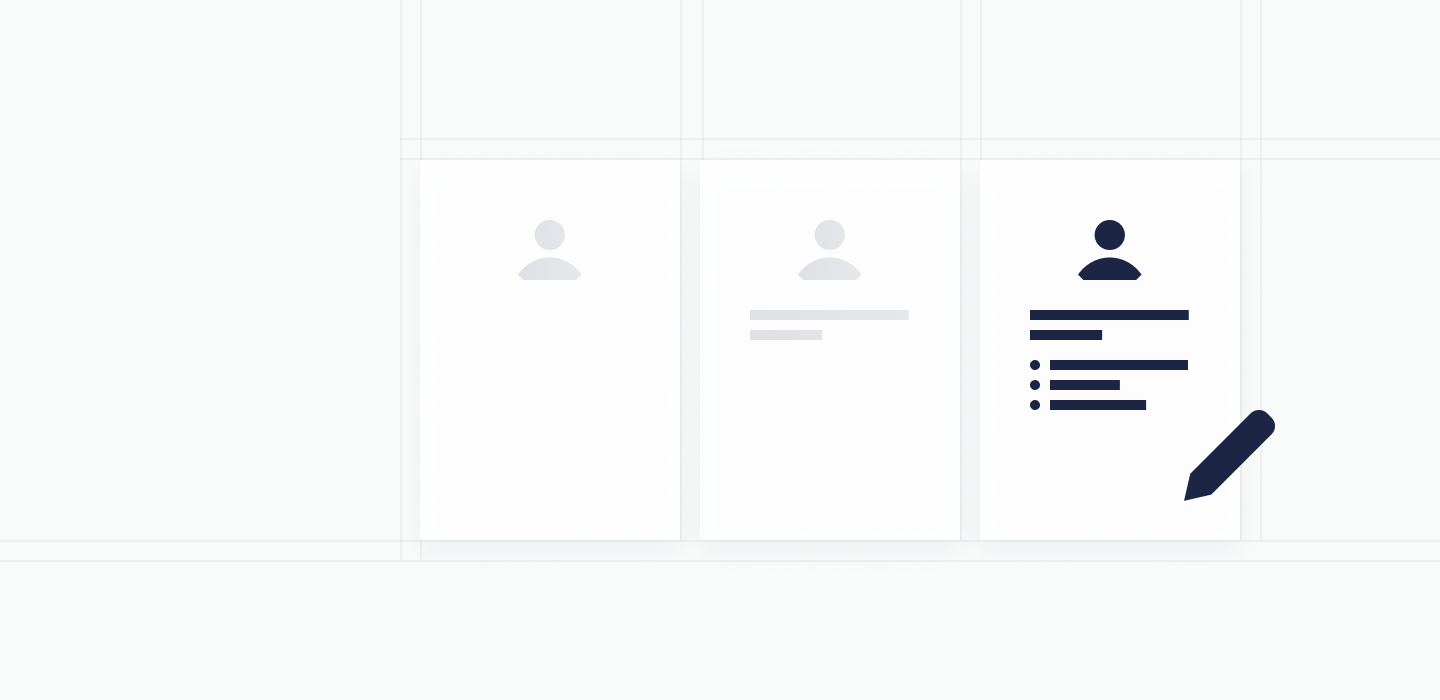The Getting Started Guide
A Phased Approach to Defining and Developing the Right Subscription Product
Introduction
With circulation declining and digital advertising being commoditized throughout the media industry, it’s more critical than ever to establish a direct relationship with users, and enable a direct-to-consumer revenue stream. Adding a subscription product can be a scalable, reliable and lucrative way to do so. But the shift in paradigm from a business revolving around ad revenue to one centered on the users themselves can be a massive undertaking that requires media companies learn new skills, understand unfamiliar metrics and think differently about both their customers and their business.
As the industry's most experienced team for developing and analyzing commercial digital experiences, Piano has worked with thousands of content websites and apps. Our experts in strategy, research and marketing know how to identify and build the right subscription product, and then optimize the customer journey, driving higher engagement and revenue.
In working towards those goals, Piano has developed a process designed to help companies get started. Our product development process includes four main phases, with proven steps and deliverables at every stage.
The Timeline


Phase 1: Understand Your Audience
Most successful subscription products meet an existing, unmet customer need and integrate into current user behavior. The first stage in creating the best product for your business, then, should be understanding both that need and your audience’s behaviors. In Phase 1, we suggest focusing on quantitative analysis and qualitative research, so that you can start to better understand your audience, business, content and market.
Step 1: Analyze your audience and user behavior
Consider what audience segment (or segments) is consuming the largest share of your content. For most media sites, it’s only a relatively small proportion of users — between two and 12 percent — who view roughly half the pageviews. What are those highly engaged users most interested in? Which devices do they use? How do they get to your site and what are their habits once they’re there? Through this knowledge you can identify your target audience and their content behaviors. You’ll also establish the size of that audience, essential for understanding your ultimate business opportunity.
Step 2: Develop a richer profile of your loyal users
Consider recruiting a small focus group that mirrors the demographics of your audience — the actual size will depend on how many audience segments you’ve identified. Interview these users, either individually or in a group, asking questions about their media habits and how they use your brand. What do they value? How does it fit into their routine? What would they change or improve? The goal is to understand their habits both on your site and on those of your competitors, to create a series of user personas that include their general routines and goals when it comes to your content category, as well as their unmet needs and pain points. Taken together, they will help you understand your audience “jobs to be done,” or what they’re really trying to accomplish in their lives when they use your site and those of your competitors.
Step 3: Talk to your team
Have a conversation with all of the key stakeholders on your internal team — including leaders from editorial, marketing, ad sales, product management, data and insights — about what they think the opportunities and challenges will be as you put together a subscription product. By talking to stakeholders across your business, you’ll begin the process of aligning the editorial, advertising and marketing departments around the goal of developing a user-focused subscription product. Piano has found that internal alignment is one of the biggest challenges media companies face when launching paid products.
Step 4: Review the competitive landscape
Explore what the other sites in your category or market are offering their users. Do they have a subscription product? What differentiates your site from theirs? Do you serve exactly the same market and, if so, what challenges might that introduce?
Primary deliverables:
- Define target audience profile and size
- Identify user personas and map to specific audience segments, their goals and unmet needs
- Complete a competitive landscape analysis, including product comparison and pricing
- Build internal alignment around potential goals and challenges, shared between all key stakeholders

Phase 2: Develop Feature Ideas
Phase 2 centers on building out the best ideas for your subscription product, and ensuring you have an offering that stands out. At this stage, you’ll bring that stakeholder group you interviewed in Phase 1 together for an intensive session — ideally two days away from the office — to brainstorm ideas for your subscription product. As the people who know your content, business and users best, they’ll be able to offer unique perspectives on your business goals, audience behaviors and the challenges you face as you create your new product and offering.
Step 1: Bring the user into the conversation
Start by reviewing your audience personas with the brainstorming team, sharing the goals and unmet needs you’ve already identified through earlier user interviews, and discussing the competitive landscape analysis. If you have videos from the user interviews, it might also help to play those back.
Step 2: Establish your goals
As you review the personas and catalog the possible problems to solve and jobs to be done, note their relationship to key business objectives. Once you have this list of problems and user needs, prioritize it. In doing so, consider the following: Opportunity. What job to be done is important to the largest number of users? Business alignment. What problem best aligns with larger business objectives? Sequence. In some cases you’ll need to create a solution for one user problem first, before you can move on to others. Ideally you should end up with one goal, and three to five main problems you’re seeking to solve.
Step 3: Brainstorm individually, then share and prioritize
Now consider the top priority jobs to be done for each persona and potential solutions for each job. Brainstorm as many ideas as possible — big, small, individual features, whole product concepts. Don’t worry about feasibility yet. Vote on your favorite ideas as a group. Those are the ideas you’ll focus on for defining your product concepts. Bank all the features and solutions, even those you choose not to pursue immediately — they may help in developing other product concepts or future iterations of the main product ideas.
Step 4: Sketch product concepts, share and vote
Focusing on the list of ideas you chose as most valuable, have each team member take their favorite to sketch as product concepts — even if they’re largely editorial rather than utilitarian or experiential. Share and review the product sketches and vote again on the most promising to move forward. Piano recommends that the brainstorm team includes a designer who can hear all the discussion, review all the ideas and the final winners, and then create a more developed concept design.
Step 5: Validate your ideas with users
Take the concept designs and conduct another round of user interviews. Does the product seem appealing? Do your users understand the product and what it does? Is their interpretation the same as your internal team? Does it help with their jobs to be done, and ease their pain points? Would they be willing to pay for the product? With this feedback in hand, you can make further refinements to the product concepts to take into Phase 3.
Primary deliverables:
- Create team alignment on the target personas and jobs to be done
- Prioritize product concepts and create a rich idea bank for the future
- Refine product concept designs with user feedback

Phase 3: Model Business Scenarios
With the product concept designs in place and everyone firmly aligned on user needs, this is when you refine the new business model and ensure it will hold up long-term, building on earlier phases of research and the fundamental business questions you’ve determined will drive subscription success. In this phase you’ll test users’ willingness to pay and the specific prices they’d pay, start to estimate conversion rate and decide the access model you’ll use.
Step 1: Define your product bundles
Before testing price, define the specific product bundles you’ll present to your users. Use the prior research on product concepts and features to establish several versions of the product offering — perhaps basic and premium tiers of your product, or different combinations of features to test which are the most appealing.
Step 2: Research pricing
Ideally with the help of a pricing consultant or someone in-house with proven experience, conduct survey research with your target audience. The goal is to understand what bundle appeals most to them, the price they are willing to pay, and how willing they are to actually buy your product. This research will also help you understand how to use pricing strategically — whether your priority is maximizing your number of subscribers, total revenue, or ARPU.
Step 3: Model revenue scenarios
Take the results from the price testing and use them to model revenue scenarios. Piano uses a proprietary modeling tool that includes every key factor: meter, freemium or hard paywall, product price, mix of annual versus monthly subscriptions, proportion of audience exposed to offers, notification type, offer conversion rates, promotional tactics, paywall carve-outs, potential lost ad revenue, retention, and more.
Primary deliverables:
- Determine pricing ranges for launch, with associated likelihood to buy
- Build subscription revenue scenarios

Phase 4: Create Your Go-to-Market Plan
At this point, you’ll have a clear understanding of your target audience, product features and the marketing messages that will best resonate. This phase is when you put all of that knowledge into action, building out your subscription product and the initial marketing plan to support it.
Step 1: Define your initial pricing
You’ve learned what users are willing to pay from the pricing research undertaken in the previous phase, but most likely that research delivered a range of price points, with some sense of a ceiling. In most cases, Piano recommends testing that range when you first launch. By comparing a handful of prices, you’ll understand initial conversion rates at different price points, which provides real-world data to tune your business model. You’ll also want to decide if you’ll offer both monthly and annual subscriptions. Annual subscriptions bring in more upfront revenue and maximize customer lifetime value. Offering a monthly option in addition to annual, meanwhile, often boosts conversion rates significantly, but could lower lifetime value due to higher churn rates.
Step 2: Define your initial target audience and access model
Decide how many people you want to focus on and what your conversion goal is to start. From there you’ll begin to identify your most likely subscribers. This will depend in large part on your access model — with meter, freemium/membership and hard paywall being the most common.
Step 3: Define your messaging
How will you talk about the benefits of being a paying customer? What will resonate best with your audience? Base your messaging on the values and jobs to be done identified in earlier research phases, and the feedback of users during the product concept testing. Define different messages to test and experiment with broad-brand messaging versus specific benefits messaging. Which drives the highest conversion and the best retention rate?
Step 4: Map your customer journey
Lastly, plan how your users will move from new to returning, and on to engaged, subscribed, retained and renewing. Each step requires the right targeting and messaging to nudge users from one stage to the next, as well as tactics and technical capabilities to target and engage those users. That includes considerations like trials and promotions, targeted discounts and marketing partnerships. You’ll want to nail your onsite and in-app customer journey before you think at all about external marketing via third-party platforms.
Primary deliverables:
- Develop a pricing plan
- Create an audience targeting plan
- Define your customer messaging Outline a customer journey map
What Comes Next
With a clear understanding of your audience, product and business opportunity, and a plan to go to market, the next step is deciding on the right software platform to power your subscription business before you go to launch. But that’s just the start. No new business gets it completely right out the gate. There are new reader revenue metrics to understand and a new culture of experimentation and improvement to develop. It takes constant testing and evolution to refine your initial decisions, tune your marketing and learn what works best for your users, as well as your editorial and business teams.
How Piano Can Help
Developing the best subscription model for your audience requires constant learning and a range of new skills you might not have immediately available to you. If your team is too small or doesn’t have the right experience, you may need help. Piano’s Strategic Services team can assist you. Led by an experienced digital publishing executive, responsible for developing the digital business at New York Magazine and helping to launch and grow MSNBC.com, it features product strategists, marketers, data analysts, copywriters and designers — all with a deep understanding of digital subscriptions and user behavior. They’re backed by Piano’s benchmark data, which provides the context you need to continually improve your marketing and site experience, drive performance and grow revenue.

Get started now.
Find out more about Piano Strategic Services or email to hello@piano.io